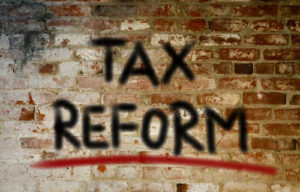Qualified Small Business Stock: An Opportunity for Investors

Qualified Small Business Stock: An Opportunity for Investors
Updated: 11/16/10
Aiming to give a boost to developing small businesses, Congress granted an unusual tax break, allowing taxpayers who buy newly issued shares of qualified small business stock (QSBS) and hold it for five years to exclude from taxation half of their capital gain realized on the eventual sale.
As part of recent legislative efforts to stimulate the economy, the Section 1202 exclusion was raised from 50% to 75% for QSBS acquired during most of 2009 and 2010. Then in September, the Small Business Jobs Act of 2010 was enacted, further amending Section 1202 to exclude 100% of qualifying gain from gross income.
For QSBS purchased between September 27, 2010 and December 31, 2010, a zero percent effective income tax rate will apply to at least the first $10 million of gain upon its ultimate sale if applicable requirements are met. Excluded gain from these investments will not be treated as a preference item for AMT purposes, so the benefits extend equally to AMT taxpayers. Below is a summary of exclusion percentage:
For QSBS acquired before Feb. 18, 2009 or after 2010 50%
For QSBS acquired after Feb. 17, 2009 and before Sept. 28, 2010 75%
For QSBS acquired after Sept. 27, 2010 and on or before Dec. 31, 2010 100%
Sounds like a wonderful opportunity? Yes, but, as so often with tax legislation, it has its limitations.
Business Limitations
First of all, not all small business stock qualified. The business issuing the stock had to be a domestic C corporation with no more than $50 million in assets at the time that the qualifying stock was issued. It had to have at least 80% of those assets in use in the active conduct of its business. And an extensive list of business types was excluded:
Businesses that performed services in health, law, engineering, architecture, accounting, performing arts, consulting, athletics, financial services or brokerage.
Businesses that have as their principal asset the reputation or skill of one or more employees.
Any banking, insurance, financing, leasing, investing or similar business.
Farming, mining or petroleum production.
Hotels, motels, restaurants and similar businesses.
Nonetheless, many small businesses do qualify.
Exclusion Limitations
As one might expect, the exclusion itself has boundaries, albeit not overly burdensome ones. Capital gains eligible for the exclusion are limited to the greater of:
$10 million reduced by the aggregate amount of eligible gain taken into account by the taxpayer in prior years from the same issuer ($5 million if married filed separately), or
10 times the adjusted basis of all qualified stock of the issuer that the taxpayer disposed of during the tax year. Additions to the basis are disregarded. This limitation can severely restrict the tax benefit of this provision in the event of a truly substantial windfall.
Limitations due to Higher Tax Rate and AMT
Although QSBS shareholder can permanently exclude from taxation 50% (or 75% for QSBS acquired during most of 2009 and 2010) of any QSBS gain, the remaining 50% (or 25%) of QSBS gain includable in taxable income is subject to a 28% capital gain tax rate, rather than 15%. Therefore, the effective tax rate on shareholder’s aggregate QSBS gain is 14% (or 7% if exclusion is 75%).
In addition, 7% of any gain excluded under Section 1202 is treated as a preference item for Alternative Minimum Tax. As a result, any taxpayer subject to AMT will pay an effective tax rate on recognized QSBS gains of 14.98% (or 7.49% if exclusion is 75%).
The tax benefits are reduced due to higher tax bracket and AMT. Still, for those whose income insulates them from the AMT, or those carrying forward an AMT credit from previous years, the QSBS option can make financial sense.
Tax-free Rollover
Another QSBS tax benefit is tax-free rollover. The stock may be sold after being held six months or more, and the proceeds can be rolled over into the stock of another qualified small business with no tax consequences. The new purchase must be completed within 60 days of the sale. The five-year holding period would then run from the date that the original QSBS was received.
In any case, it’s not really necessary to hold QSBS for five years. If, after a year or more, the investor feels that the stock has peaked, he or she can always sell and pay no more than 15% on the gain, with no AMT consequences.
Tax Saving for Loss
There is also a generous provision for losses realized on the sale of small business stock. The owner can claim up to $50,000 of ordinary losses in the tax year of the sale ($100,000 on joint returns). Any excess is treated as a capital loss, deductible against capital gains and up to $3,000 of ordinary income, with any excess carried forward to be deducted in succeeding years.
There are special requirements for such benefits:
At the time the stock is issued, the issuing corporation must be a small business corporation defined as follows:
A corporation is a small business corporation if the aggregate amount of money and other property (valued at their adjusted basis) received by the corporation for stock, as a contribution to capital and as paid-in surplus, does not exceed $1 million.
During the proceeding five years (or shorter period if the corporation has not been in existence for five years), the issuing corporation must have had no net income or must have derived more than 50% of its aggregate gross receipts from sources other than royalties, rents, dividends, interest, annuities, and gains from the sale or exchange of stocks or securities.
Does a QSBS investment make sense for you? That’s a question best answered in consultation with trusted and experienced professional advisers.
We hope you found this article about “Qualified Small Business Stock: An Opportunity for Investors” helpful. If you have questions or need expert tax or family office advice that’s refreshingly objective (we never sell investments), please contact us or visit our Family office page or our website at www.GROCO.com. Unfortunately, we no longer give advice to other tax professionals gratis.
To receive our free newsletter, contact us here.
Subscribe our YouTube Channel for more updates.

Alan Olsen, is the Host of the American Dreams Show and the Managing Partner of GROCO.com. GROCO is a premier family office and tax advisory firm located in the San Francisco Bay area serving clients all over the world.
Alan L. Olsen, CPA, Wikipedia Bio

GROCO.com is a proud sponsor of The American Dreams Show.

The American Dreams show was the brainchild of Alan Olsen, CPA, MBA. It was originally created to fill a specific need; often inexperienced entrepreneurs lacked basic information about raising capital and how to successfully start a business.
Alan sincerely wanted to respond to the many requests from aspiring entrepreneurs asking for the information and introductions they needed. But he had to find a way to help in which his venture capital clients and friends would not mind.
The American Dreams show became the solution, first as a radio show and now with YouTube videos as well. Always respectful of interview guest’s time, he’s able to give access to individuals information and inspiration previously inaccessible to the first-time entrepreneurs who need it most.
They can listen to venture capitalists and successful business people explain first-hand, how they got to where they are, how to start a company, how to overcome challenges, how they see the future evolving, opportunities, work-life balance and so much more..
American Dreams discusses many topics from some of the world’s most successful individuals about their secrets to life’s success. Topics from guest have included:
Creating purpose in life / Building a foundation for their life / Solving problems / Finding fulfillment through philanthropy and service / Becoming self-reliant / Enhancing effective leadership / Balancing family and work…

MyPaths.com (Also sponsored by GROCO) provides free access to content and world-class entrepreneurs, influencers and thought leaders’ personal success stories. To help you find your path in life to true, sustainable success & happiness. It’s mission statement:
In an increasingly complex and difficult world, we hope to help you find your personal path in life and build a strong foundation by learning how others found success and happiness. True and sustainable success and happiness are different for each one of us but possible, often despite significant challenges.
Our mission at MyPaths.com is to provide resources and firsthand accounts of how others found their paths in life, so you can do the same.
How Will New Tax Reform Affect Divorce in the Coming Year?
How Will New Tax Reform Affect Divorce in the Coming Year? No one plans on getting divorced when they decide to tie the knot. Love will conquer all, right? Unfortunately, that’s not how things work and about half of all marriages still end in divorce. Divorce is almost never pleasant and any couple that decides…
Tax Reform Brings New Changes to Section 1202
Tax Reform Brings New Changes to Section 1202 Tax reform is here, love it or hate it. So, with the New Year here that means it’s time to start working under different tax law. To be clear, the 2017 tax year, for which you will file a return this year, is not affected by the…
The Best Cruises for Non-Cruisers
The Best Cruises for Non-Cruisers Have you been on a good cruise lately? For some travelers, nothing beats a cruise. You get to relax on a floating resort with access to unlimited food, drinks and recreation without a care in the world. For some this is the definition of heaven. However, cruises aren’t exactly for…
What Does Bitcoin’s Future Hold in 2018?
What Does Bitcoin’s Future Hold in 2018? Have you been caught up in the Bitcoin craze? It’s not the only cryptocurrency performing well but it does get the most notoriety. Cryptocurrency has been taking the investment market by storm since the beginning of 2017 and in December several of digital coins saw tremendous gains, with…




